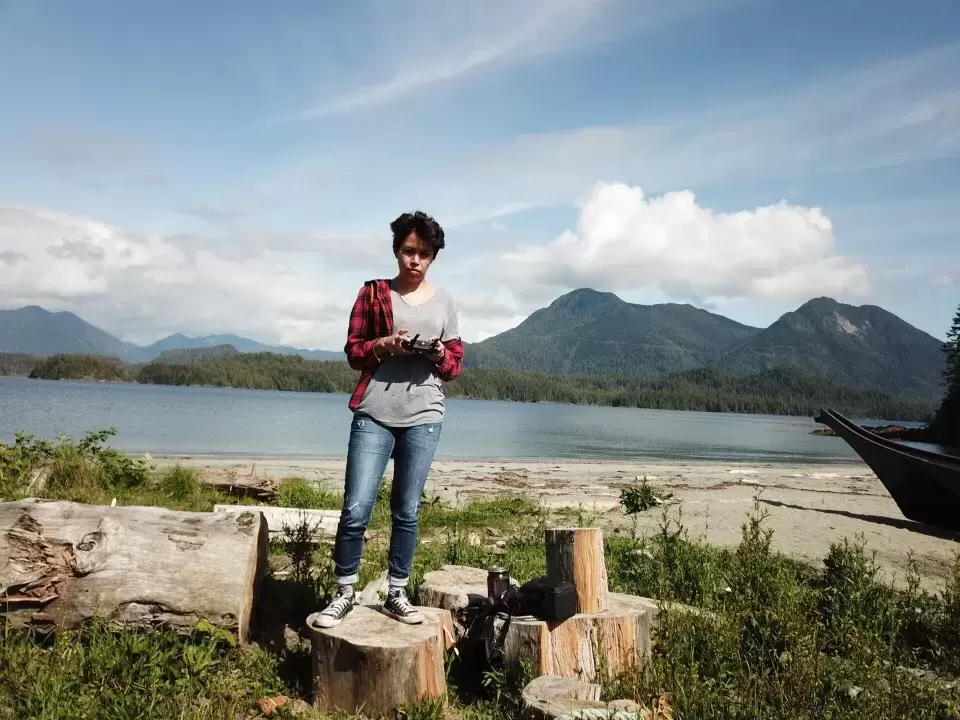An Indigenous woman from Ahousaht is hoping to spread awareness about mental health within First Nation communities by following and documenting the Heliset Hale relay run.
The annual relay is a 900-kilometre run across Vancouver Island that raises awareness about suicide prevention. It was scheduled to begin in Port Hardy on Sept. 9, but has been postponed to a later date by the First Nations Health Authority due to respiratory concerns over wildfire smoke.
Courtenay Louie, a graduate from the Centre for Arts and Technology in Kelowna, plans to create a documentary by filming the relay and speaking with some of the runners to gain personal stories and their reasons for running.
“I’d also like to interview some mental health workers, and somebody at the Kuu-Us Crisis Line to talk about how we can use both our traditional teachings and western practices together to help battle or combat and cope with mental health,” Louie said. “When I interview someone I like it to be really natural like a conversation.”
Louie said the documentary’s message is personal for her because she lost her brother to suicide last year.
Louie has applied for a Telus Storyhive grant that would provide her with $50,000 to go towards her project if she wins. The winners will be chosen through a voting system, which is now closed. Louie plans to take a small crew with her on the trip to help film if she is granted the money, if not she will still try to make the documentary happen.
“I have been in contact with the relay organizer and I told her even if I don’t get the grant I’d still like to come along by myself, or with a friend to come and help film,” she said.
Wanting to give voice to Indigenous issues and culture, Louie has previously made three short documentaries.
“One was on the history Ahousaht and how we came to be living where we are now, another one is on the traditional governance here so it covers the lineages of the chiefs and what their roles and responsibilities are and the last one is about song and dance, so what different songs and dances mean, who they belong to and why you have a red and white flag,” Louie said.
Louie has also done some film work for Ahousaht’s education department. She hopes to continue highlighting First Nation traditions and experiences through filmmaking, especially on the West Coast.
“I looked up different First Nation film makers and there’s a lot of Prairie and northern film makers and people from back east like Ontario and Winnipeg has a big Aboriginal scene in film making,” Louie said. “But there aren’t many people - I don’t know many people - in this industry [who] do what I do even in the Nuu-chah-nulth area. I know there’s a few but they work in Vancouver.”
Fifteen projects from B.C. and Alberta will be picked to receive the Telus Storyhive grant. Louie will find out on Sept. 7 if her film was chosen.
“I actually had to come up with a pitch and projection binder and submit it and have a budget for it,” Louie said. “I’m just waiting around to see what the results are. My film crew, they’re in Kelowna so I’d have to go up there and pick them up and travel all the way to Port Hardy and be on the road for probably the whole month of September filming it.”







